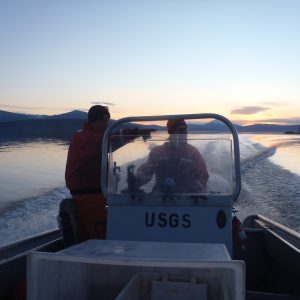I want to share with y’all a simple step-by-step process for processing a seed lot. First things first, collect the seed from a field site and bring it back to the Seed Bank and put into a plastic container with a label.
Then this material will be rubbed on to different screens in order to separate out the seeds from the other plant material. I’ve attached a photo to show what the pods of a C. heterophyllus look like once they’ve been opened by rubbing it on a screen.
Once the seed has been separated from the plant by use of the different screen sizes, then an air separator is used to remove debris and unfilled seeds from the seed lot.
After the whole seed lot has gone through the air separator it is considered ‘clean.’ I write ‘clean’ because if it is a seed lot with extremely small seeds, there tends to be tiny debris as seen in the photo below. If this is the case, the seed lot will have to be hand-cleaned.
Hand-cleaning a seed lot involves a microscope and tweezers, and takes a lot of time. Since the seeds are so small, as well as the debris, one must look through a microscope in order to pick out the left over debris. Once this is complete the seed lot is officially clean!
Seed processing takes a lot more time than I had thought, but the end result is so clean and pretty!
-Sandra














